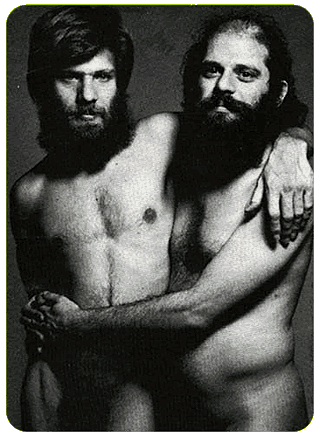
An upcoming auction at Sotheby's in New York will sell off material left behind by Beat poet Allen Ginsberg, who died in 1997. It was to have been a larger affair hawking the manuscripts, household goods, and ephemera of the Beat Big Three, but the estates of Jack Kerouac and William S. Burroughs pulled out. Ginsberg's holding company scrambled to come up with enough lots to justify the auction; they eventually put out a plea to Ginsberg collectors to part with items from their fetishistic hoards.
The reason so little remained from the lifetime of this self-historicizing pack rat was that in 1994 Ginsberg sold a monumental pile to Stanford University Library for a cool $1.2 million. This attic-full of debris included the grungy tennis shoes he was wearing when kicked out of Cuba in 1966, his shopping lists, and a bag full of his beard clippings. Maybe someday they'll clone the DNA in his beard.
But Ginsberg's shrewd self-marketing didn't go off without a hitch -- complete disclosure as countercultural self-promotion can have some unexpected repercussions.
Long an advocate of boy-love, Ginsberg portrayed himself as more of an ephebophile who dug older teenagers than a corrupter of wee children. Casting himself in the mode of boy-loving poets Whitman and Verlaine, he met a steady stream of starry-eyed youth at his readings and at Naropa where he taught poetics.
He became a card-carrying member of NAMBLA (The North American Man/Boy Love Association), a network for pedophiles. He spoke on this subject in the 1994 film Chicken Hawk. ("Chickenhawk" is the street name for gays who pursue underage boys.) This controversial film resulted in a soul-searching feature article in the mainstream gay magazine OUT, quoting Ginsberg's defense of NAMBLA.
Then, when some of Stanford's staid professors and stuffy alumni were still grumbling about Ginsberg's notorious career of peace, pot, and protest, Esquire magazine excerpted the OUT article zeroing in on his pedophilia. The Esquire-reading academics attempted to keep the resulting tempest contained in their own teapot, but then Herb Caen wrote it up in his San Francisco Chronicle column, letting the Beat cat out of his bag.
But whatever hair-pulling took place behind the scenes, the acquisition was already a done deal. Caen just succeeded in humiliating Stanford. Ginsberg, ever the shameless old dharma bum, showed up there in early 1995 for a triumphal reading against censorship.
The roots of Ginsberg's pedophilia should be evident to anyone who's read his renowned poem "Kaddish." He was sexualized at a traumatically early age by his mother. Naomi Ginsberg had been a radical and a nudist all her life. Succumbing to a worsening schizophrenia, she was left in the care of her precocious teen-aged son. In "Kaddish" he described her lolling around the house exposed:
"One time I thought she was trying to make me come lay her [...] -- ragged long lips between her legs -- [...] seemed perhaps a good idea to try -- know the Monster of the Beginning Womb --"
Those who are dragged into sex as children tend to want sex with children -- this time with themselves in charge.
Ginsberg later formed a relationship with Peter Orlovsky, a sweet but simple (and heterosexual) younger man. Their 40-year partnership ended with Allen financing a stay in a Buddhist funny farm for his speed and booze-addled protégé after Peter chased him through the streets of New York with a sharp instrument.
For his part, Ginsberg spent his declining years in a support group for spouses of alcoholics. In the 1996 video The United States of Poetry, he read a "Personals Ad" about trolling for young boyfriends and, at nearly 70, was shown in bed with one.
The video was shot in the apartment he purchased with the Stanford lucre. A death watch took place there the next year and celebrities were encouraged to pose for a photograph with the comatose bard. Patti Smith, a sort of professional artist mourner by this point, made the scene. So did Gregory Corso, who was accused of walking out with choice souvenirs once Allen had given up the ghost. No surprise there -- he made it a regular practice while Ginsberg was alive.
What I wonder is, who got that NAMBLA membership card?
Neo Tony is a mail artist and radio personality. His Situationist japes include arranging for the delivery of 20 pounds of severely rotten fish to the Surrealist Ball held at the University Art Museum in Berkeley, as written up in The Wall Street Journal.
